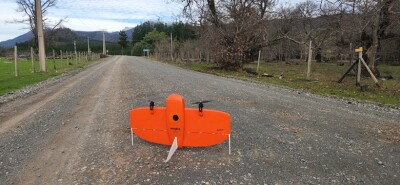Within any new industry, there can be tendency to use buzz words to give validity to a new approach. As an analyst, you get used to ingesting large amounts of industry communications. Admittedly, you also begin to overlook terms that are used time and time again. To let you in on a small secret, within the unmanned aerial vehicle (UAV) industry, phrases such as “actionable information” or “actionable data” have quickly become such terms. At the inaugural Commercial UAV Expo Europe event in Brussels this week, the effort to define and help people understand what these terms actually mean was apparent, which is a great development for several reasons.
Focus on industrial applications, regardless of context
In her opening address, Lisa Murray was clear to emphasize that the focus of the Commercial UAV Expo is on industrial applications where the UAV can and should be thought of as just another tool. That focus on the operational requirements for commercial users resonated in the keynote presentations.
It is all about automation
- Technology: size of drones, how far drones can fly, different types of sensors to mount on drones, resolution of images that can be captured from drones.
- Regulation: Where can we fly, who can fly, what can we fly. How does regulation help or hinder what we want to do with a drone?

Operator-centric proposals to European flight regulations
Regulation – what are you trying to do?
Being based in North America, one of the hottest topics that I have observed for quite some time is around how FAA regulations needed to change to permit commercial operations. In most cases (including in the US), flight regulations are categorized in accordance with the weight of the drone platform.That’s why it was refreshing to hear the keynote by Koen De Vos of the European Commission’s Transportation Directorate. Mr. De Vos talked about the clear links between drones and automation, and how the acquisition of big data is the key. The other link that has been made by the Commission is that the automation provided has direct impact on jobs, growth and issues such as climate change. Given that there could be potential for what could be 28 different sets of national regulations for European firms to need to negotiate, there is a wish for pan-European regulations to not “kill the beast” regarding enabling business to work the results of the big data analysis. Accordingly, the European regulations currently being worked on are related to what the operator is trying to do, rather than what the characteristics of the platform are.
Koen De Vos
Technology – investments in technologies to extract the information that the client needs
Hendrik Bödecker of Drone Industry Insights described the approach that his firm takes to ascertain the size of the drone market, in the context of assessing the direction of investment dollars. Over the last three years, there has been a swing in VC funding from hardware to software solutions.The benefits of UAVs being the preferred data collection are a given in many contexts. What we have to have are solutions to deliver the information that is needed to fulfil a data gap. This does not often mean an image or map type of data product. Service providers have found that their clients would regularly ask, “what do we do with all the pictures?” Firms such as 3DR needed to and have changed their perspective from a drone manufacturer into being information delivery platforms to meet the needs of a specific they of user.
Trends in the destination of VC investment
















Comments